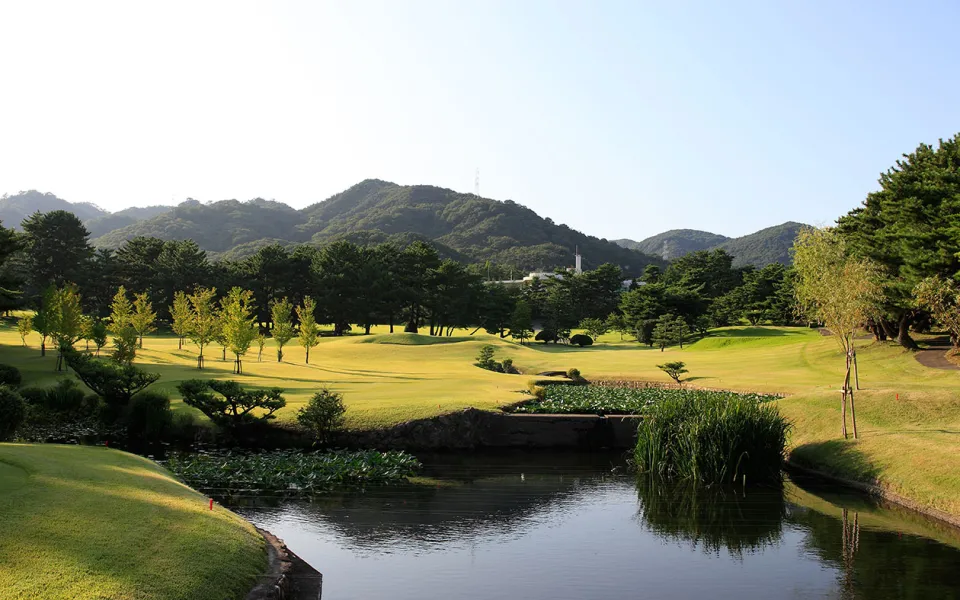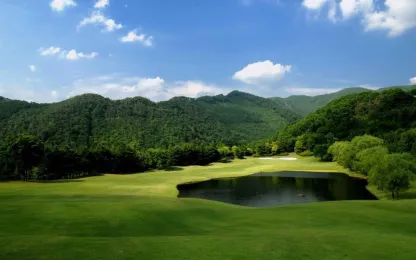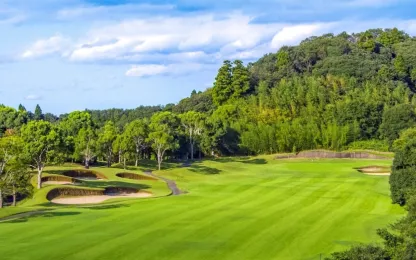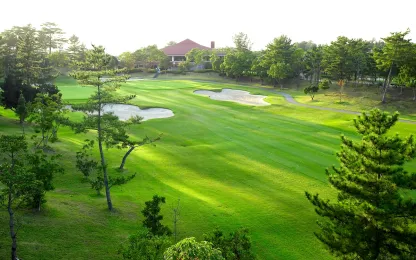Tsutsujigaoka Country Club is an 18-hole, 6,670-yard par-72 offering an interesting challenge for all levels of golfer. The course layout is quite...
Latest japan travel

Kagoshima Travel Guide
Kagoshima Prefecture, located at the southern tip of Kyushu, is a region steeped in history, natural beauty, and cultural heritage. As the home of the powerful Satsuma samurai clan, Kagoshima played a crucial role in Japan’s modernization and was one of the first prefectures to engage in foreign
Design King: Seiichi Inoue
A Japanese Course Design Legend
In 2020, all golfing eyes will be focused on the Kasumigaseki Golf Club in Saitama Prefecture, with the East Course there hosting the golf tournament of the Tokyo Olympics. One of the architects involved in the creation of Kasumigaseki was Seiichi Inoue, regarded as the master of golf design in Japan.
Inoue’s contribution to Kasumigaseki was twofold: First, he introduced the two-green system in Japan at Kasumigaseki, and secondly, he designed the West Course there. While the West Course remains, the two-green system doesn’t.
Image: Ise Country Club by Ken Tenzing
Kasumigaseki to Kinki'
Kasumigaseki West was Inoue’s first project as a designer. He followed up Kasumigaseki with courses in Kanagawa, Tochigi, and Ibaraki. Eight of Inoue’s first 10 courses were in the Kanto area and included Nasu Golf Club (1936), Hitachi Golf Club (1936) and the beautiful Oarai Golf Club (1953).
Inoue’s first post-war course was the Awase Meadows Golf Club in Okinawa in 1948, but then he returned to Kanto to work on Kawasaki International Country Club and Oarai.
While he continued to create masterpieces in the Kanto Region, he also started to make his mark in the west of Japan. The 1950s and ’60s saw him reach his peak as a designer, completing 26 courses in those two decades. While he continued to create masterpieces in the Kanto Region, he also started to make his mark in the west of Japan.
The Spirit of Japan
Image: Ise Country Club by Ken Tenzing
One of his most well-known courses in the Kinki Region is Ise Country Club, close to Ise Shrine, the spiritual center of Japan. In typical Inoue style, the course challenges the golfer with its natural contours and varied terrain. Inoue liked it even more after famously notching a hole-in-one at the 17th hole.
Inoue’s toughest two courses were both in the west of Japan. Mie Prefecture’s Kuwana Country Club, which he designed in 1960, is rated at 74.8, while Aichi Country Club is not far behind at 74.7. Inoue was ahead of his time in terms of length as Kuwana, which opened in 1960, measures 6,800 yards from the regular tees. Aichi, meanwhile, was built on land that was once a hunting ground owned by the Owari Tokugawa family, who were descended from Ieyasu Tokugawa.
Mountains, rivers and lakes
Image: Courtesy of Nishinomiya Country Club
Another tough course in the west is Nishinomiya Country Club, which has the Ni River running through it, while for the more spectacular Inoue created two of the three courses for the Seta Club, sandwiched between Lake Biwa and Mt. Hiei. They are complemented by a spectacular clubhouse and the nearby 38-story Lake Biwa Otsu Prince Hotel. The North Course at the Seta Club is a rare in-and-out – i.e., one way – course in Japan and hosts the US LPGA’s Mizuno Classic.
Inoue's Design Philosophy
Image: Courtesy of Seta Golf Club
When he outlined the design process for the Ryugasaki Golf Club – one of his masterpieces that opened in 1958 – he set the template for Japanese golf course design as follows:
-
A course should be designed to be friendly for players;
-
Holes should be laid out so as to be overcome with strategy and planning;
-
Every hole must appear differently. Holes should not be boring. They must always give players a taste of something new;
-
With a beautiful natural setting, the course should not only have great form but should also transport the player to a kind of paradise;
-
Golfers are required to master every type of shot.
Inoue’s philosophy was that you should be using every club in your bag and understand every type of shot that might be required. His focus was on the player rather than the golf club. He wanted to create a fair challenge that made the golfer think.
Inoue was heavily influenced by British architect C.H. Alison, who transformed Kasumigaseki East into a championship venue soon after its opening, primarily through the addition of deep bunkers.
Despite Alison’s reworking of Kasumigaseki, the British designer was known for making full use of nature and Inoue kept faith with this philosophy. The idea was not to disrupt nature for the sake of creating a nice golf course, but to keep the beauty of nature for the sake of a nice golf course. If Inoue couldn’t make a course according to his principles, he’d turn down the job. Alison, of course, defined these principles with his masterpiece at Hirono Golf Club near Kobe.
A Legacy To Remember
Image: Courtesy of Hirono Golf Club
Inoue died in 1981 at the age of 73, but even death couldn’t stop him. Three of his designs were completed in the years following his death, including one of his best, Hamano Golf Club in Chiba Prefecture.
Nearly 30 years after his death, he is still regarded as Japan’s best golf course designer. In 2003, a coffee-table picture book was published celebrating the beauty of the 38 golf courses he created. For many, his courses were indeed a work of art.
Partner Courses
Browse our featured courses renowned for their hospitality!

Hanna Country Club
阪奈カントリークラブ
Designed by master craftsman Shunsuke Kato, this full-fledged urban championship course has hosted prestigious events such as the LPGA Osaka Women's...

Setouchi Golf Resort
瀬戸内ゴルフリゾート
Setouchi Golf Resort stands as one of Japan's premier resort courses, gracing a prime hillside location overlooking the picturesque Seto Inland Sea...





























